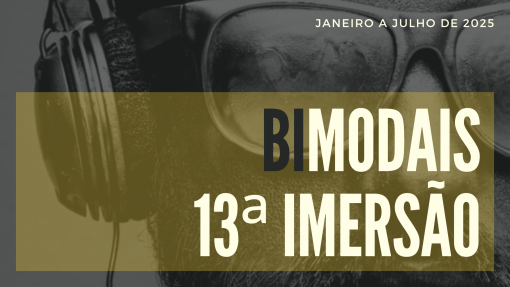If a man does not know to what port he is steering, no wind is favorable to him (Seneca).
We are living through an unprecedented event in human history: in just one generation we have passed through three knowledge platforms: from a digital platform (1950-1990) to networks (1995-2004), and, from the latter, to collaborative networks (2004-?).

Why did we invent grunts, speech, writing, books? Why did human beings invent the computer? Why, afterwards, did we conceive networks and why are we now already disseminating collaborative networks?
What reasons lead us to create knowledge systems based on increasingly more dynamic information and communication technologies?

These are questions I have raised in my doctoral research for the Postgraduate Program in Information Science, UFF–IBICT agreement, funded by the CNPq, and under the guidance of professor Aldo Barreto.
This is a continuation of the study I initiated with Marcos Cavalcanti, when we published Conhecimento em Rede (Networked Knowledge), released by Campus Publishing House last year.
This work has now developed into my first academic paper “Knowledge Platforms”, published in December 2007 by the online magazine DataGramaZero. A summary is presented here.
We start from the principle that humankind – unlike other living beings on the planet – self organizes through knowledge systems in order to survive. Their central core is communication and information technologies – in historical order: grunts, speech, writing, the book, the computer, mass media, networks, and now collaborative networks (whose central core consists of collaborative tools).
Knowledge systems have always had the mission of disseminating and confronting ideas, extracting from information relevant meanings to generate development and allow the human species to survive and evolve throughout centuries, in order to eat, dress, find shelter, create…

Up to now, knowledge systems have not gained their due historical importance because it used to take centuries for them to change. Presently, this has shifted in the ongoing innovative environment. They started to be altered every decade (with a trend for this interval to diminish), thus gaining the status of a key concept to understand our future.
We conceptualized these systems as Knowledge Platforms that, throughout history, have helped in the struggle for human survival.
Here are, in a preliminary presentation, the basic rules of these platforms that I have so far determined in my research:
1. Knowledge platforms are not linear. On the contrary, they show breaks and ruptures. They are exhausted by incapacity to sustain their efficiency in an evolving society (consider, for example, oral discourse, the book, the computer, and the internet itself without collaboration). When the cycle is completed, the platform starts to decline and a new one arrives, incorporating and transforming the information flow of the previous platform with new dynamism.
2. Hence, a new platform arises to solve impasses (entropies) created and left over by the previous one, and to bring in a new space for society’s innovation and development. Printed books and newspapers were used by Martin Luther to end the Catholic Church monopoly over knowledge, and networks brought us the MP3. Collaborative networks, still incipient, brought about the Linux. Both break with current knowledge production monopolies.
3. However, at the same time it unties knots, the new platform itself already entails new entropies by increasing information speed and flow in a more dynamic way. From its very inception, it generates new problems of meaning in so far as it does not allow for transforming the scattered volume of information into knowledge, thus creating the need for a new platform at the same time as it solves a problem.
4. The new platform that arises is always contained in the previous one, as were the different collaborative environments on networks, from chats to Yahoo Groups, prior to the mass dissemination of collaborative networks.

5. Therefore, each platform has a mother technology, a central core that drives everything else forward. Yesterday there were grunts, speech, writing, the book, the computer, electronic networks. Today we enter the platform of collaborative networks – in which collaborative tools propel the new dynamics, as we already mentioned above.
6. Thus far, platforms have always been created in a non-planned, spontaneous way, through core technologies. Their initial conception lacked the dimension of their true potential. Gutenberg did not plan movable type to make the European revolutions that followed his invention viable; nor did US scientists imagine that their long-distance network (much later dubbed the internet) would have billions of users in less than 20 years, and that it would change how society is configured.
7. When appropriated and disseminated by those who want to change and innovate, new platforms undergo a rapid expansion cycle with the adherence of the planet’s inhabitants who intuitively perceive their advantages over a previous platform. Thus, what defines the dissemination of a platform is not only the will to spread it but also its real capacity to accelerate information flow and, through this, ensure people’s adherence. Hence, no platform without massification.
8. However, platform diffusion is not homogeneous. There are still indigenous tribes who have no writing; communities of adults who cannot read; others who never saw a computer, and many people who already use it but had never connected to any network, let alone participated in online communities.
9. Although they are not homogeneous, these platforms tend to lead the pack when it comes to value generation. They attract the most dynamic sectors that need them to survive. In the course of time, they impose the new pattern on the rest of society. The fact is that wherever it exists and creates wealth, the new platform will be adopted and widely used! The opposite happens where it is not adopted: it will leave behind a wake of poverty – those who knew how to read got the best lands!

10. Each platform that arises opens up a new cycle of social, political, and economic changes. It outlines the environment so human beings can come up with new ideas and thus move the wheel of history in their struggle for power (to possess, to be, to dominate, to do). There would not have been the French Revolution without books and newspapers; nor Linux without the internet. One change feeds the other in a dialectical process.
Therefore, we are living through an unprecedented event in human history: in just one generation we have passed through three knowledge platforms: from a digital platform (1950-1990) to networks (1995-2004), and from the latter to collaborative networks (2004-?).
This creates a new contemporary paradox: each new platform entails more speed, more solutions, more problems, and more entropy, in an increasingly shorter cycle.

As a sphinx, it asks us, so far with no answer in Google or Wikipedia: Decipher me or I’ll devour you!
Translated by Jones de Freitas – Edited by Phil Stuart Cournoyer.










[…] I complemented this discussion with: Knowledge platforms: decipher me or I’ll devour you! […]